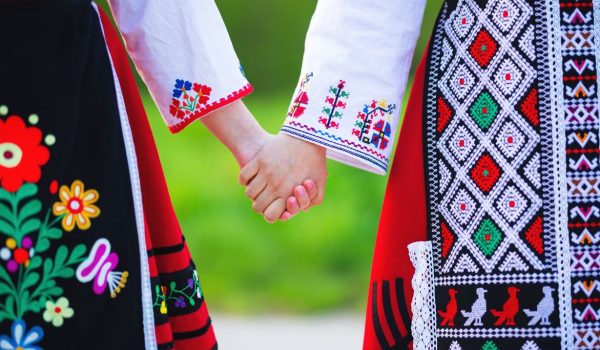In Palestine, culture is more than identity—it’s a way to survive, resist, and speak without words. Among the many forms of expression, traditional embroidery stands out. Known as tatreez, this craft has been passed down for generations, stitched with stories, symbols, and strength.
At first glance, tatreez may seem like decorative clothing. But behind the colors and patterns are layers of meaning—expressions of home, heritage, and belonging. In occupied territories, where daily life is shaped by military presence and political restriction, embroidery has become a quiet, steadfast act of resistance.
Threading Memory Into Fabric
Each stitch tells a story. Palestinian women, especially in rural areas, have long used embroidery to document family lineage, regional identity, and even major life events like births, weddings, or grief. A certain pattern might mark a town, like Hebron or Ramallah. The colors might reflect the environment—reds and blacks for the soil, green for olive trees.
During the early 20th century, embroidery was mostly used to decorate thobes—traditional dresses. Women embroidered in their homes, at community gatherings, or during moments of rest. It wasn’t simply a task; it was a ritual that tied women to their land and each other.
But after the 1948 Nakba, when over 700,000 Palestinians were displaced, embroidery took on a different meaning. Displaced families carried their thobes with them—often the only tangible link to a home they could no longer reach. Embroidery became a way to remember, to hold on, and to resist the erasure of culture.
More Than Art: A Political Statement
In occupied territories today, tatreez remains relevant—not only as art, but as political testimony. Stitching a dress with patterns from villages that no longer exist is a quiet but bold assertion that those villages, and the people from them, are not forgotten.
Organizations and collectives have emerged to support this form of resistance. Women’s cooperatives across the West Bank and Gaza work to preserve traditional patterns, provide economic support, and teach younger generations the craft. These groups understand that culture is not separate from the struggle for justice—it is part of it.
Even internationally, tatreez has gained recognition. Palestinian artists and designers incorporate these patterns into modern clothing or artwork to draw attention to the ongoing occupation and the need for cultural survival. Wearing tatreez is no longer just about tradition—it’s about visibility, resilience, and pride.
Teaching Resistance Through Threads
In many refugee camps, embroidery workshops are offered to young girls and women. These classes are more than creative outlets—they are spaces to process trauma, build skills, and pass on culture. Participants not only learn techniques but also the history behind each design. This ensures that the meaning isn’t lost, even as the designs evolve.
For many, the act of embroidery becomes personal therapy. Stitch by stitch, they find space to breathe, reflect, and express emotions that might otherwise go unspoken. The thread becomes a tool for survival, both emotionally and culturally.
One young girl from Dheisheh refugee camp once shared, “I didn’t know my village’s name until I stitched it into my dress.” These are the quiet victories—reclaiming history, one pattern at a time.
Embroidery in Global Solidarity
Tatreez is also being used to connect Palestine to the world. Artists and solidarity groups across Europe, the U.S., and Latin America host embroidery workshops to teach the craft and share the stories behind it. In doing so, they build bridges between struggles—recognizing shared themes of dispossession, resistance, and dignity.
When people from other countries wear or stitch Palestinian patterns, they carry a piece of this history with them. It becomes an act of solidarity—a way to amplify Palestinian voices in a world that often silences them.
Some fashion designers, like Jordan Nassar or the women-led group Darzah, have taken this global. They collaborate with Palestinian embroiderers to create ethically sourced pieces that fund education and local development while telling the world: Palestine is still here.
Adapting Without Losing Meaning
As tatreez enters global fashion markets, there’s a concern: will the political and cultural roots be diluted? Will embroidery become a trend, stripped of its context?
This is where education matters. Palestinian artists and teachers emphasize that tatreez is not simply aesthetic. It’s a symbol of presence, persistence, and place. Whether it’s sewn into a jacket in Ramallah or printed on a scarf in Paris, its meaning must remain tied to its origins.
Online platforms now play a role in protecting that context. Social media pages, virtual workshops, and digital archives help preserve the stories behind each design, ensuring that anyone who engages with tatreez understands its deeper meaning.
Preserving the Past, Empowering the Future
Tatreez is not frozen in time. While rooted in tradition, it continues to grow and adapt. Young Palestinians are creating new patterns inspired by contemporary struggles. Some incorporate modern symbols, like keys for return, doves for peace, or barbed wire for restriction. These designs tell the story of today’s Palestine while honoring the past.
At the same time, the embroidery economy supports families—especially women-led households. In places where jobs are scarce and mobility is restricted, embroidery offers income without needing to leave home. Cooperatives provide structure, materials, and platforms to sell their work locally and abroad.
In this way, tatreez does two things at once: it preserves a people’s heritage and provides a path for economic self-reliance.
Why It Still Matters
Culture is often the first target in any effort to erase a people. Destroy the stories, remove the symbols, silence the language—and you weaken the will to resist. But embroidery refuses that fate. It is quiet, but it is unshakable.
Palestinian embroidery is resistance in its most intimate form—held in the hands of grandmothers, passed to daughters, worn at weddings, stitched in sorrow. It is art, memory, and protest combined.
To understand tatreez is to understand a piece of the Palestinian spirit. It’s a reminder that even under occupation, creativity, dignity, and hope can survive.

